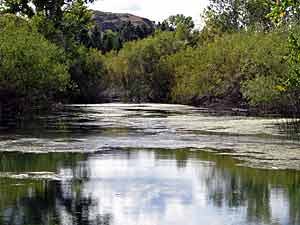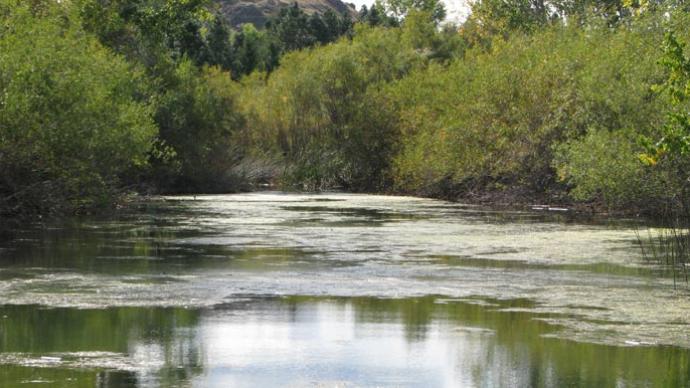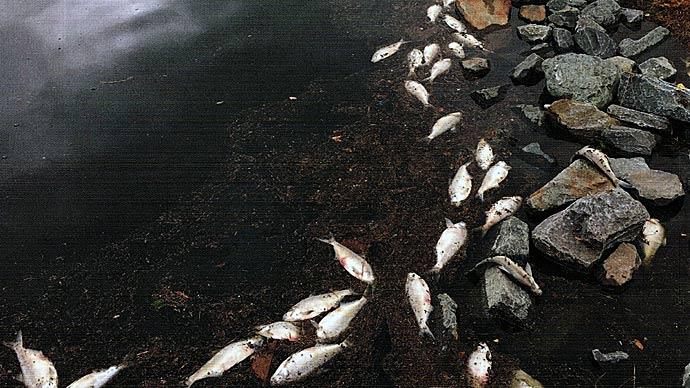
Blame it on Mother Nature or her unruly offspring, La Nina. Take your pick. Either way, the same weather witch in the Pacific that brought numbing temperatures of -20 below zero in January and covered the Carolinas in a sheet of ice, gave Oklahoma, Texas, Arkansas and Louisiana an uncommonly mild winter.
Granted, Tulsa and Little Rock received a white blanket during Super Bowl week, but in the main, water skiing temperatures prevailed through much of the winter, creating problems for pond owners in the South and Southwest, says fisheries biologists Mac McCune.
"I've got customers with bushy pondweed that never died," said McCune, a POND BOSS Field Advisory Staff member who runs Lake Management Services in Richmond, TX. "It just kept right on growing all winter."
For McCune, Harrell Arms and other pond professionals in the region, that means one thing: aquatic vegetation.
Plants that survived the winter will have a running start on the new growing season this spring, says Arms, a second-generation fisheries consultant who runs Arms Fish Farms and Bait Co. in Dublin, TX. He and his pond-owning clients are braced for what shapes up as a tough battle that may require them to use any of the three common weed control methods -- chemical compounds labeled for aquatic application, bio-logical introduction of white amur (grass carp) or mechanical harvesters that cut weeds below the water surface.
For his part, John E. Foster of Foster Lake and Pond Management in Garner, NC will use his share of weed-eating grass carp and spray acres of noxious vegetation with herbicides. But when it comes to the toughest challenges, filamentous and blue-green algae, he often turns to a non-traditional treatment method: Barley straw. Foster says he has been getting effective control of algae by placing bales of barley in the water. Loopy as it may sound, Foster has been fighting algae with barley, from the Carolinas into Ohio and Indiana, for nearly three years.
"This is not new," Foster said. "We first heard stories of people in Europe using barley straw for algae control. We started researching it and, sure enough, we found that the technique had been developed in England other countries.
"Once we found it on the internet, we started studying it and trying to find some barley here." Foster found a producer, bought a few bales and put some in a few test ponds the first spring. It worked. Ponds once overrun with filamentous algae had noticeably less greenish-yellow goo floating on top. Same for nutrient-rich ponds that had been covered with blue-green algae.
Foster, a veteran fisheries consultant, does not know exactly what the barley straw does to the algae, he just, knows that, in 70-80 percent of his ponds, it works. "For some reason barley works better than wheat or rye straw," Foster said. "It is not well understood, but when the barley decomposes in the water, that process produces hydrogen peroxide which controls algae."
Hydrogen peroxide is an inexpensive compound (commonly used as a household disinfectant), so why not just pour it in the pond? "Nobody seems to know for sure, but the conditions that produce the peroxide are similar to what produce algae' " Foster said. So, with barley in the mix, the pond generates hydrogen peroxide instead of algae? "I guess so," Foster said with a noncommitted shrug.
This much he knows for sure: In 1998, Foster placed barley straw in five ponds on an experimental basis. Encouraged by the early returns, he expanded to 30 ponds last year, and shipped bales to pond owners as far away as Illinois, Connecticut and Texas. This spring Foster plans to use as much of it as possible.
He thinks barley could be used to control algae, not just in fishing lakes, but golf courses, backyard ornamental koi ponds, livestock watering holes, wetlands, municipal waste water reservoirs, water gardens and dairy operations.
Foster has found, however, that inexplicably, barley does not work in all ponds. More puzzling, in those failed applications, there seems to be no common water condition.
So far, the best results have come when Foster placed the barley in a 1- to-3 acre pond, at a rate of one or two bales per surface acre. Foster tried barley in a 17-acre lake but three months into the project, the pond owner objected to the looks of the bales and had them removed.
Barley is best, Foster says, when set out in early March, then again in early July. A bale may take 6-to-8 weeks to rot, and unless it is covered by water, it can be something of an eyesore in homeowner's lakes, but the straw deteriorates without producing a noxious odor of its own.
The barley seems to be more of a preventative than a cure, Foster says, so first-time users may find it necessary to treat existing algae with copper compounds, then follow up with barley straw.
Foster has put the straw in a plastic netting that creates the impression of sausage, but more often, he simply dumps a bale in shallow water along the shoreline and tacks it into the mud with a stake. Wind and wave action slowly break up the bale and start the chemical reaction. "It's not 100 percent effective," Foster said, "but it does help."
Better yet, barley straw may be boxed and shipped by United Parcel Service (UPS) and other shipping firms. Orders of four bales or more are bound in clear plastic shrink- wrap, loaded on a wooden pallet and shipped, standard ground. Cost of a bale retails for $35, plus shipping of $10-$15.
For the benefits of prevention, that's dirt cheap. Trouble is, barley straw is not readily available. Foster has found a couple farmers in North Carolina who raise barley for hog farms, but his regular clients use all he can get, so he does not advertise.
"In years past, I've had ponds with blue-green algae so thick, it looked like pea soup," Foster said. "It was so bad, I was scared to death that I would have oxygen depletion and a fish-kill. Those same ponds look good now."
Literature on the topic is limited, but for more information, try the Journal of Aquatic Plant Management, 1993 ( volume 31, page 203-206).
Foster may be contacted by writing Foster Lake and Pond Management, POB 1294, Garner, NC 27529.
Reprinted with permission from Pond Boss Magazine



